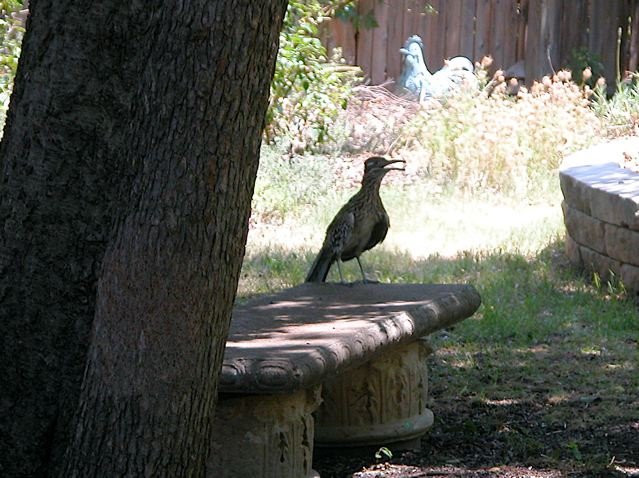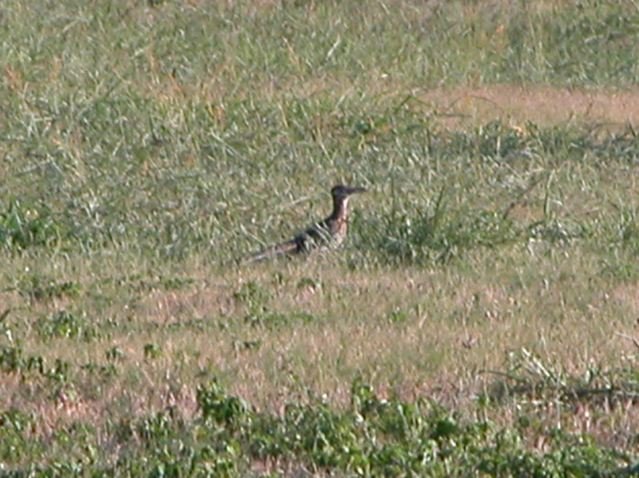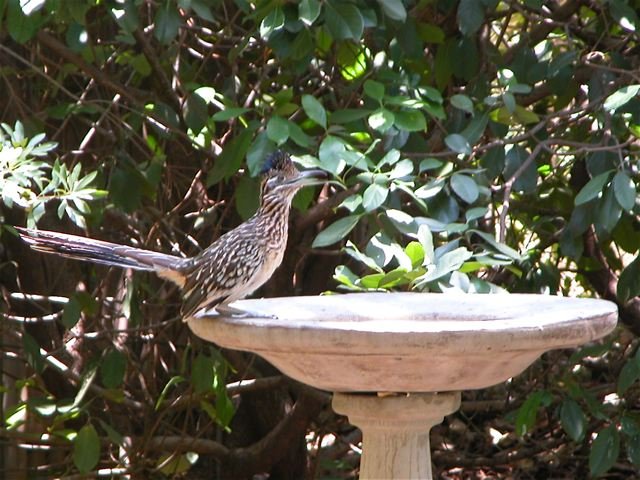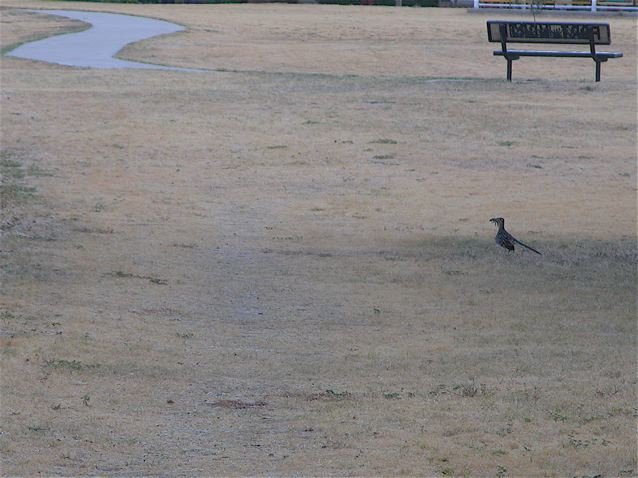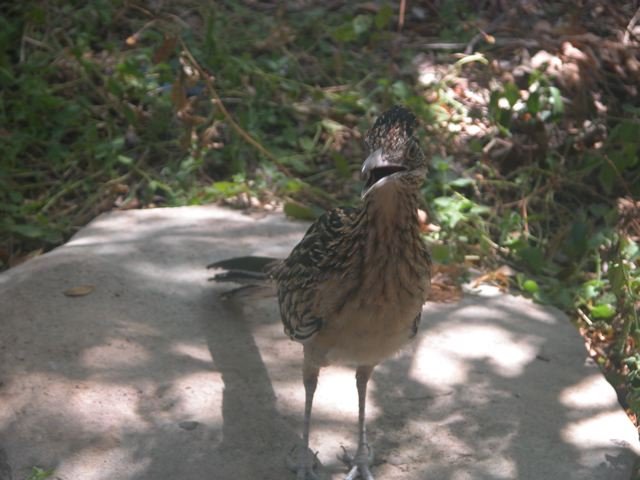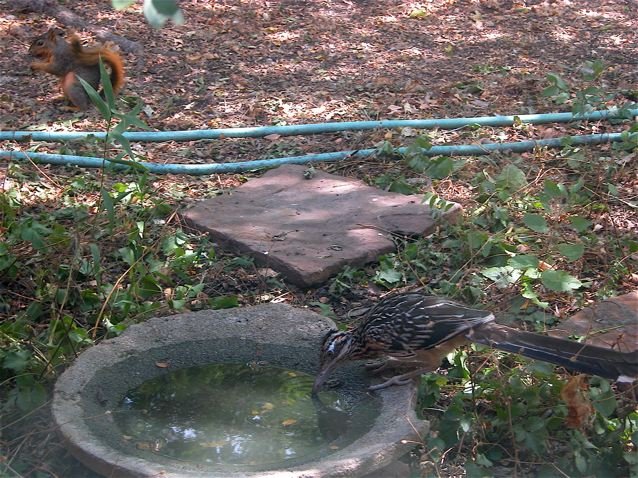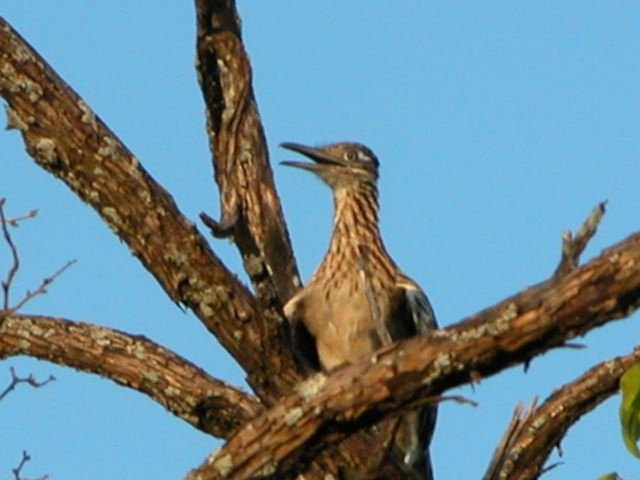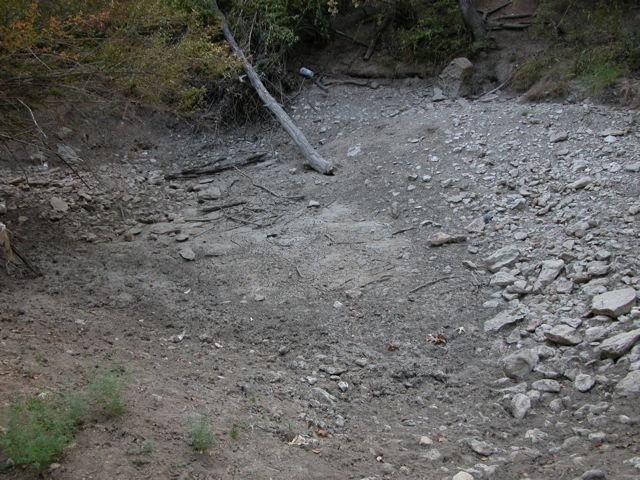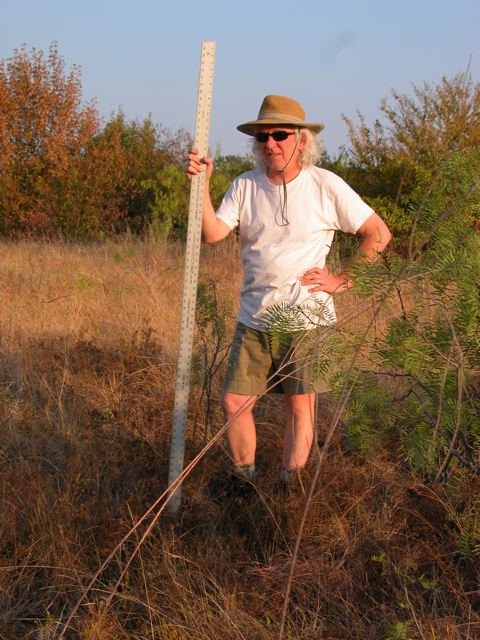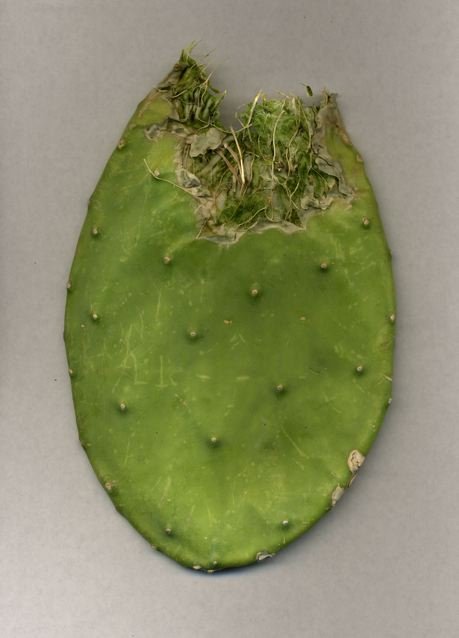PRAIRIE NOTES #57: Summer of My Roadrunner
Prairie Notes are monthly photo/journal observations from Tandy Hills Natural Area by Founder/Director, Don Young. They include field reports, flora and fauna sightings, and more, mixed with a scoop of dry humor and a bit of philosophy. They are available free to all who get on the FOTHNA email list.
Summer of My Roadrunner
Prairie Notes: #57
September 1, 2011
1) Summer of My Roadrunner
2) The Case of the Wandering Water
3) Field Report
4) Wildflower of the Moment
5) Making Every Raindrop Count
6) Prairie Plant Puzzler
7) Prairie Proverb
1) Summer of My Roadrunner
Approaching my 60th Summer, I have only recently had a close encounter with a Geococcyx californianus, aka: Greater Roadrunner. The strange looking, beautifully-colored and somewhat, comical bird, has always seemed larger than life to me, mysterious, almost legendary. I have always thought of them as desert dwellers, but my new friend has been following me around Tandy Hills, and my backyard, all Summer. This particular, State Bird of New Mexico, seems intent on becoming the Official Bird of Tandy Hills Natural Area.
Also known as, Chaparral Cock and Paisano Bird, they are members of the Cuckoo family. Their diet consists of insects, lizards and snakes, mostly. They are renowned for killing and eating Rattlesnakes. Although Fort Worth is not technically a desert (yet) the epic drought of 2011 makes it seem that way. The Roadrunners seem to have adapted here. Rattlesnakes, beware!
These birds are so fast they can snatch a Hummingbird or Dragonfly out of the air. I have witnessed my agile, bushy-crested friend feasting on Dragonflies and Texas Spiny Lizards, both speedy critters, and I found fragments of small garden snakes in my birdbath last week. Since the few water holes at Tandy Hills are now bone dry, they have annexed our yard into their territory.
Roadrunners are reluctant flyers, but they are the fastest, running-flying bird, reaching speeds of up to 26 mph. Humans don't stand a chance. Only flightless Ostriches can run faster. But they can and do fly when necessary.
The last time I saw my Roadrunner friend was last week around sunset. He saw me coming and half flew, half walked up a dead tree. We stood watching each other in the fading light. It watched me curiously and somewhat warily. Perhaps a nest was nearby since this is where I saw a pair in late Spring. We had a good talk. I tried to explain that, he was safe with me, that, Roadrunners were my new totem animal, that, my water is his water, my yard, his yard. He seemed to understand and went about his preening.
I also thanked him for protecting Tandy Hills from evil spirits, just as his ancestors did for the Hopi and other Pueblo Indian tribes. I thanked him for leaving me a feather to remind me of our encounter and to seal our bond. And mostly, I thanked him for reminding me to stay connected to the natural world.
DY
> Go here to listen to a Roadrunner voice:
http://www.allaboutbirds.org/guide/greater_roadrunner/id
> Special webpage about Roadrunners for kids:
http://www.enchantedlearning.com/subjects/birds/printouts/Roadrunner.shtml
> Bookshelf:
The Roadrunner: The Tenth Anniversary Edition, Wyman Meinzer, (1993) 2003.
The classic book on the subject with stunning photographic essay.
http://www.amazon.com/Roadrunner-Tenth-Anniversary-Wyman-Meinzer/dp/0896...
The Real Roadrunner, by Martha Anne Maxon, 2005.
Full of info and insight into my new favorite bird.
http://www.amazon.com/Real-Roadrunner-Animal-Natural-History/dp/0806136766
> Roadrunner Factoid: Although known as monogamous, the male Roadrunner is also a crafty fellow. When luring a mate he will tempt the female with food while dancing around her until she begs. Only after copulation will he release the food.
2) The Case of the Wandering Water
Last month I reported on the lack of water at Tandy Hills and the installation of a water barrel for wildlife. Only a pinch of rain has fallen since. In early August it was reported to me that there was, in fact, water in at least two of the deep holes along Tandy Creek. I was skeptical at first but after rechecking discovered this to be true. I felt kind of like, Detective J.J. Gittes in the film, Chinatown, wondering how the water could just reappear in the middle of a drought. I was beginning to doubt my sanity.
Then it hit me like a water balloon! I remembered that a major water-main break had occurred just upstream on July 22. According to eyewitness reports, the breech was HUGE - a river of water flowed for hours into the creek that runs through Tandy Hills. One observer noticed a waterfall at the far north end of the creek near I-30. The water holes were magically refilled.
Case solved! An unfortunate water main-break for the City was a lucky break for Tandy Hills wildlife. For awhile. As of today, the water holes are again, bone dry. Take my word for it.
3) Field Report
- As the drought crawled across the August calendar like a murder of crows on a ripened cornfield, the number of insects declined. Normally in late August, the air is buzzing with Dragonflies but not this year. Fewer insects means trouble for birds and other wildlife. Across from Tandy Hills, our backyard bird feeders and water sources are attracting a crowd, including, many uncommon species. Among the sightings:
Owl
Red-tailed Hawk
Cooper's Hawk
Brown Thrasher
Orchard Oriole
Wilson's Warbler
Vireos
Buntings
Robin
Hummingbirds
Woodpecker
Western Meadowlark
and of course... Mr. Roadrunner
- I was nearly swallowed alive by a giant chasm in the parched earth of Tandy Hills in mid-August.
True Story.
Thankfully, I had my trusty 8' ruler with me to catch my fall. I proceeded to measure the depth of the abyss and discovered it to be slightly less than halfway to China but still pretty darn deep. About 34" deep, to be exact. No doubt, the cracks have gotten deeper. I'm building up courage to measure again. Note to self: Take climbing rope next time.
- Four-footed mammals, too, are suffering from lack of water and ever-diminishing green space from various industrial sources. Prickly Pear Cactus, is showing telltale signs of being eaten by Rabbits and/or Raccoons, a sure sign that they are desperate. As a result, I'm seeing more Vultures lately.
- From all reports, Texas Spiny Lizards are having an exceptionally good year or maybe they are just more visible in their search for water and food. Either way, they are crawling all over the prairie.
4) Wildflower of the Moment
This is almost a cruel joke this year. Truth is, even the usual late-Summer bloomers are just hanging on to survival. But there is one unusual plant that I see around the edges or near tiny seeps at Tandy Hills that can endure drought or flood. You have probably stepped on Texas Frogfruit (Phyla nodiflora) and thinking it just a weed. The tiny (3" - 6") commonplace plant is easy to miss but still provides an important source of nectar for insect pollinators, especially in a drought. It is also a larval host for the Phaon Crescent and White Peacock butterflies. And it ain't bad-looking either. Please, don't step on Texas Frogfruit.
Texas Frogfruit frolicking in the August sun.
5) Making Every Raindrop Count
Such is the title of a great article in the New York Times (8/25/11) about Texas landscapers embracing of native prairie grasses. The drought has been a game-changer, especially in Austin, where clean water is appreciated more than some places. There is also a report on the restoration of Mueller Prairie, a 30 acre Blackland prairie that used to be buried under an airport.
As you may recall from Prairie Notes #46, C-4 grasses such as Sideoats Grama lock up carbon in the soil much better than trees helping minimize the effects of global warming. Read the article here:
http://www.nytimes.com/2011/08/25/garden/prairie-grass-landscapes-in-aus...
Mueller Prairie restoration project, Austin, Texas.
6) Prairie Plant Puzzler
Do you know me? I'm so hale and hardy I produced this showy, aromatic bloom, smack dab in the middle of the drought. My secret is a long taproot. My new feathery leaves and long, sharp thorns are so shiny green you'd think Spring had sprung again. My seed pods were a taste treat to Native American tribes but cowboys would rather see me heating up their BBQ pits. It is true, I can get out of hand but if I grow big enough my shade is better than nothing. Love me or hate me, I'm still beautiful.
(Be the first to guess my name and win a beautiful, organic cotton, Tandy Hills bandana that'll blow your mind AND your nose.)
Stumped by the August puzzler? Answer: Inland Sea Oats (Chasmanthium latifolium)
Name me and win a cool prize.
7) Prairie Proverb
"You see, I had been riding with the storm clouds, and had come to Earth as rain, and it was drought that I killed with the power that the Six Grandfathers gave me."
~ Black Elk, from Black Elk Speaks, 1932
Killing the Drought, 1931. One of 30 drawings made by Black Elk's friend, Standing Bear.
All content by Don Young unless otherwise noted.



